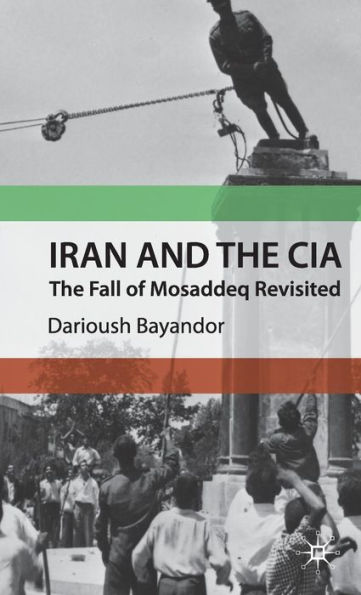Table of Contents
List of Illustrations x
Acknowledgements xii
Preface xiv
Introduction 1
How the story evolved 3
How did a myth about the CIA role develop and prevail? 5
Why did the CIA files remain unclassified? 9
1 The Context 11
Foreign influence as a prime mover in Iranian politics 12
The Tudeh Party 13
The Azerbaijan Crisis, 1945–46 14
Shah Mohammad-Reza Pahlavi 16
The Ulama as a socio-political force 18
Ayatollah Seyyed Abol'qassem Kashani: the precursor of clerical activisim 20
Razmara: prelude to the oil nationalization crisis 22
2 The Advent of Mosaddeq and the Oil Crisis 27
The rise of the National Front 27
The nomination of Mosaddeq 29
Doctor Mohammad Mosaddeq: a sketch 31
The initial British reaction to oil nationalization 33
The early American attitude to the oil dispute 35
Political line-ups in Tehran 39
Early conduct of the oil dispute 40
The British complaint to the Security Council 43
The Washington oil talks 44
The World Bank proposal 48
Early forebodings 50
3 Mosaddeq's Second Government, July 1952 to August 1953 52
The Qavam hiatus and the Siy'e Tyr popular uprising (21 July 1952) 54
Rift among Mosaddeq supporters 57
A wedge to break the oil log-jam: the Truman-Churchill joint offer 59
Mosaddeq's reforms and the theory of legitimacy 62
The British two-pronged strategy: subversion and engagement 64
The covert track 65
The engagement track 68
Diplomatic relations with Britain are broken off 69
Final attempts to resolve the oil dispute 70
A day forgotten in the Iranian collective memory 72
4 The Downslide 74
The clash at the helm; the February 1953 jumble 75
The Grand Ayatollah Boroujerdi: a retrospective sketch 78
General Fazlollah Zahedi 81
Internal conspiracies 82
The abduction of the police chief 84
The link-up: TPAJAX and the internal cabal 84
The summer of all dangers 87
The taming of the Shah 89
The failure of the TPAJAX coup 94
5 The Downfall 98
The gathering storm, 16-18 August 1953 99
The backlash: events leading to the fall of Mosaddeq on 19 August 105
Monitoring by the US Embassy 110
The Final hours 111
The military factor in the fall of Mosaddeq 113
TPAJAX military planning and the role of Iranian officers 115
6 The Anatomy of 19 August 118
CIA station activism in Tehran, 16-19 August 123
The role of Iranian agents 125
Surprise in Washington 131
Ambassador Henderson's last meeting with Mosaddeq 133
The CIA money 136
An orphan British secret document 140
Analysis of the British secret document 141
A coup d'état, a popular uprising or something else? 144
7 Where Did the Spark Come From? 147
The missing link: the Boroujerdi factor 150
8 Summary and Conclusions 155
Power structure and internal dynamics in the early 1950s 155
Mosaddeq's rule 158
The handing of the oil crisis and stalemate 161
External and internal conspiracies 162
The TPAJAX coup and its aftermath 165
The involvement of ulama 172
The causes of Mosaddeq's defeat 173
Notes 176
Direct Sources of the Study 234
Index 238



